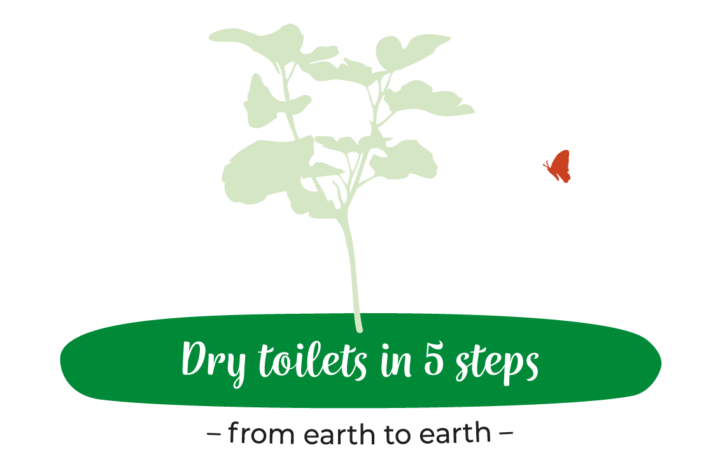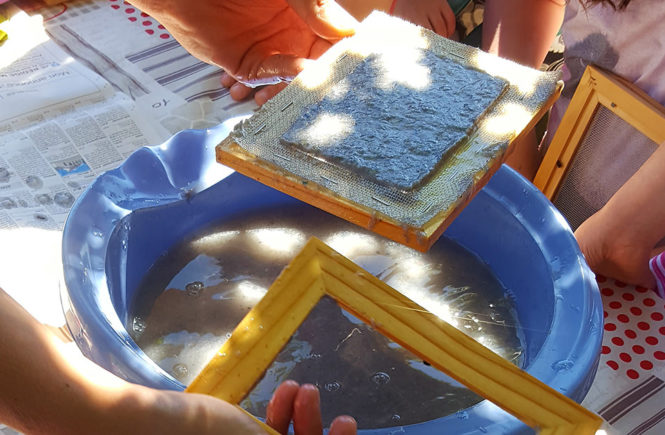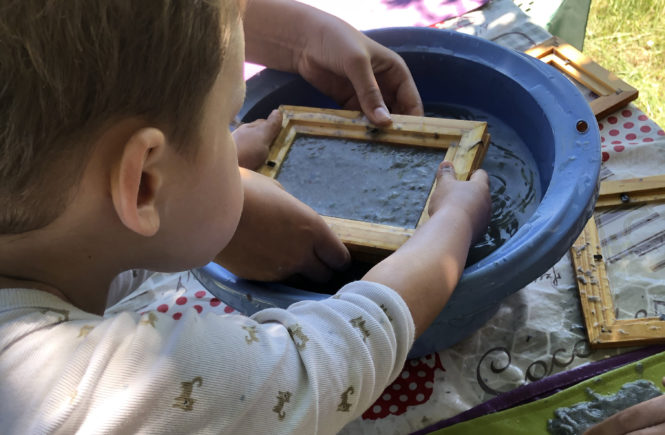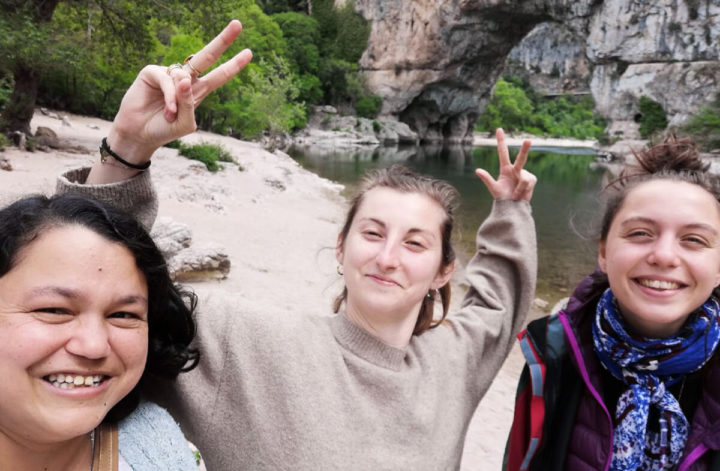Since 2019, we are gradually installing non-flush toilets on the campsite. First one in the restaurant, then two in the sanitary facilities. Today we have 22 of dry toilets spread between the common areas and the accommodation, and even 4 for the campers at their pitch. They have replaced the traditional toilets in our desire to be economical and reduce water consumption. Find out how we manage them, their benefits, and where we are.
5 steps from the earth to the earth

1. Dry matter from pruning
Dry toilet management is prepared in advance. In the off-season, we cut down dead branches, as well as those that hinder the installation of campers, or that touch the roofs (as little as possible and outside the bird nesting period). All this is shredded to obtain a stock of shredded material which will, in a way, replace the flush of the dry toilet.
2. Going to the dry toilets
So when you go to the toilet, you add a little dry matter to absorb the liquid. This prevents odours and allows the compost to mature properly later.
The little extra: the natural scent of the junipers, or the pine trees.
3. The logistics of the season
Obviously, the bucket fills up bit by bit and must be emptied regularly. Like the milkman of old times, we go from door to door to change the buckets and add some crushed material to the stock. And everything is going well!
4. The compost from dry toilets
The “harvest” is placed in a special compost place, where it will gradually compost into a kind of potting soil. Do not worry, we have other composts for other uses.
5. Returning to the soil
After a few months, a rich compost remains, ideal for feeding plants. Don’t worry, we don’t put it in the vegetable garden or the shared gardens. This compost is only used for non-edible plants. We have other compost for other use.
They will be pruned later, giving chippings and so on… the permaculture cycle, naturally, to which you contribute during your holidays.
A great saving of drinking water
A toilet flush uses between 6 and 12 litres of water each time it is flushed. That’s about 14,000 litres of water per person per year, and no less than 20% of the water used by a household. And for all this, we use drinking water! So what if we do things differently?
Dry toilets at the campsite, where we are
In this spirit of sobriety, we have installed the first dry toilet in the restaurant in 2019. Then 2 more in the sanitary facilities in 2020, including one for the little ones, as an alternative to the traditional toilets. In the same year, we launched this service for campers, a private dry toilet on their pitch, by reservation. And it caught on quickly!
These first installations allowed us to see the interest of the customers, to get their feedback and to set up the necessary logistics. A good test. Moreover, since the beginning, we have called on L’écopot for their simple and practical, easy to deploy solution.
In 2022, we are further developing this ecological alternative. We are taking advantage of the renovation of our summer bungalows to change the traditional toilets into dry toilets. In the same spirit, we are equipping our new ecolodges with dry toilets. This is an extra service compared to our old canvas bungalows, which had no sanitary facilities.
We now have 22 of them, which represents 52% of our toilets. And 13 of our 30 accommodations are equipped with them. This means that hundreds of litres of water are saved, which is a precious action in our region.



